New CDC Guidance on disinfecting facilities…Should we stop disinfecting?
You may have read about new guidance from the CDC questioning the need to disinfect surfaces to prevent the spread of COVID-19. This guidance suggested that cleaning with soap and water might be good enough in many situations.
Take a Pause….
While this CDC guidance maybe advisable for homeowners, we think that commercial facilities should take a step back and consult with their janitorial and sanitary supply partners to address some of the issues raised in this guidance.
The basic premise of this new guidance is that it is much less likely to contract COVID-19 from a surface than from person to person airborne transmission.
Opinion: This is NOT new information, the most common route of transmission is person to person via inhalation of the virus, this has been known for a long time. The likely hood of virus transmission from a surface is low, but does that mean we stop disinfecting surfaces?
In this blog post we examine this new guidance and real world issues that facility managers should ponder before changing their approach.
Here is a portion of the CDC Guidance Cleaning and Disinfecting Your Facility…..
“When to Clean and When to Disinfect
Cleaning with products containing soap or detergent reduces germs on surfaces by removing contaminants and may also weaken or damage some of the virus particles, which decreases risk of infection from surfaces.
When no people with confirmed or suspected COVID-19 are known to have been in a space, cleaning once a day is usually enough to sufficiently remove virus that may be on surfaces and help maintain a healthy facility.”
Suggesting a facility manager adjust protocols back and forth based upon their knowledge of COVID-19 cases in a facility is rather unrealistic. For example… today we disinfect because we have a suspected COVID case, tomorrow we go back to cleaning, then back again, this scenario is unlikely to happen in the real world!
High Touch Surface Disinfecting vs High Touch Cleaning
While we can’t argue against the fact that regular cleaning removes soils and some pathogens from a surface, it
certainly doesn’t remove everything and that is where thoughtful disinfecting comes in.
When thinking about a disinfection strategy for a facility, you get your biggest bang for your buck with High Touch Surface Disinfecting. We believe that “high touch cleaning” may not be the appropriate response in commercial facilities to COVID-19 or other contagious pathogens that may be present.
Once a Day is Good Enough?
Classifying High Touch Surfaces in a facility maybe needed to add some sophistication to cleaning or disinfecting frequency protocols. While some high touch surfaces could be addressed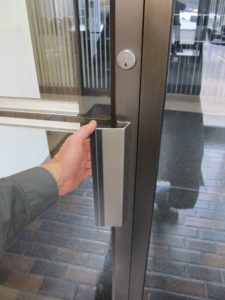 once per day, high occupancy buildings
once per day, high occupancy buildings
may have surfaces that should be cleaned/disinfected multiple times per day. One could quickly classify high touch surfaces as High, Medium and Low or use a numbering system.
#1. High Intensity Touch Surfaces: Main entrance doors, lobby areas, service counters, check out aisles, touch displays.
#2. Medium Intensity Touch: Public Restroom entries and stalls openings.
#3. Low Intensity Touch: Interior doors, office doors.
NOTE: Look for products that are labeled as cleaner-disinfectants or One-Step cleaner-disinfectants. These products contain cleaning agents and have demonstrated efficacy against pathogens in the presence of organic soil contamination. If you are using household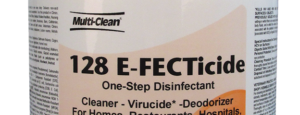 bleach, you must clean the surface prior to disinfecting because it is rapidly inactivated by organic soil.
bleach, you must clean the surface prior to disinfecting because it is rapidly inactivated by organic soil.
Talk to Your Distributor of Professional Cleaning Products
As you read through new releases and CDC guidance information, there are concerns about inhalation hazards associated with much higher use of disinfectants. The janitorial and sanitary supply distributor can offer solutions that can minimize or eliminate inhalation hazards, below are just a few suggestions.
Solutions for Reducing Inhalation Hazards of Disinfectant Application
Trigger Sprayers: Retail style, single use trigger sprayers often seen on a variety of household products offer a single ‘mist’ type spray pattern. A better choice is a commercial grade re-usable sprayer with an adjustable spray pattern to adjust to a coarse spray and virtually eliminate inhalation of airborne mists.
Use Low VOC or low volatility disinfectants: Many disinfectants are free of solvents (VOC’s) or other volatile compounds that emit vapors that can be inhaled. One of the most common volatile compounds used in some disinfectants is bleach or other products that generate chlorine. The chlorine evaporates and is readily inhaled.
Throw Away the Trigger Sprayer: Another option is eliminating spraying altogether. Using a solution of disinfectant with microfiber cloths or pre-moistened microfiber cloths to clean/disinfect surfaces is a great way to avoid inhalation potential of cleaning and/or disinfecting solutions.
Consider Disinfecting Wipes: While wipes are expensive on a per use basis and generate substantial waste, they are convenient, especially when using the right disinfectant that does not emit respirable vapors.
Use Targeted Spraying for Large Areas: Using wide area sprayers, misters or foggers presents an inhalation hazard if appropriate precautions are not taken. However, the use of Electrostatic Sprayers drastically reduces the amount of airborne mist that might be inhaled. The reason is the electrical charging of spray droplets makes it so the droplets are attracted to surfaces like a magnet and don’t remain airborne for long.
More from the CDC on Disinfecting Safely…..
“Disinfect Safely When Needed
If you determine that regular disinfection may be needed
- If your disinfectant product label does not specify that it can be used for both cleaning and disinfection, clean visibly dirty surfaces with soap or detergent before disinfection.
- Use a disinfectant product from the EPA List N that is effective against COVID-19. Check that the EPA Registration number on the product matches the registration number in the List N search tool. See Tips on using the List N Tool.
- If products on EPA List N: Disinfectants for Coronavirus (COVID-19) are not available, bleach solutions can be used if appropriate for the surface.
Resources:
Link to CDC Guidance: Cleaning and Disinfecting Your Facility | CDC
Blog Post: Do I still need to disinfect surfaces during COVID-19 and Beyond?
Technical Bulletin: Developing a High Touch Disinfecting Program
High Touch Checklist for Schools
Conclusion: The CDC’s New Guidance on Disinfecting Facilities is well intentioned and should cause facility managers to examine current protocols and determine the most productive methods to keep a facility clean and safe. We certainly believe that High Touch Disinfecting should be an important part of the mix in maintaining clean, heathy and safe facilities today and into the future.
Multi-Clean offers a full line of cleaning, disinfecting and floor care products sold exclusively through authorized distributors. We also offer the E-Spray Electrostatic Sprayers (Victory Sprayers).
Please contact us or visit our website.


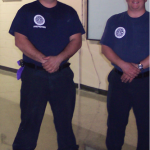
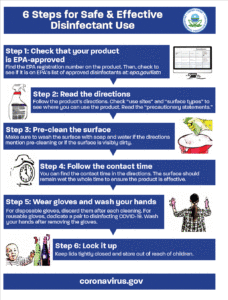
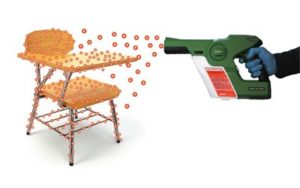
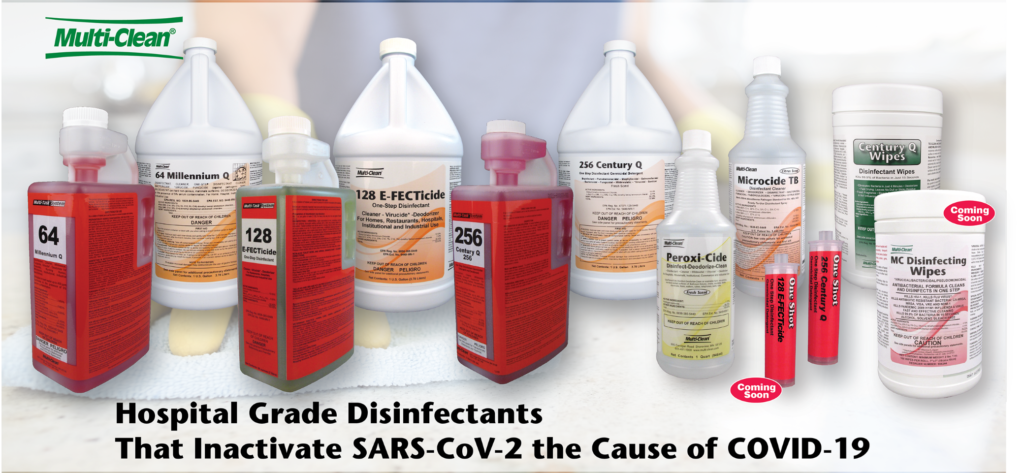
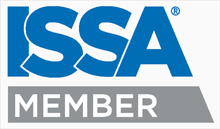
This is a great article. In the facility where I work, we clean surfaces like desks and tables with a hospital-grade disinfectant (as too the restrooms) and we make certain to vacuum every day. All cleaners have their own equipment and do not share these or any chemicals and cloths are used and taken home to launder by the cleaning who uses them. All equipment is cleaned and then disinfected at the end of each shift and the keys are sprayed nightly with a disinfectant. We employ two full-time hygiene officers who disinfect all high-touch points 4 times a day with a hospital grade disinfectant. Twice a week we clean other surfaces with a mixture of detergent and disinfectant. Not one case of Covid-19 has been reported in the facility for the last 12 months – NOT ONE, nor have we had any person not come to work due to contracting the virus. As such, I think we should all continue with the Disinfecting Programs that any business may have currently have in place.
Thank you for this information. You always think about cleaning and disinfecting to kill the germs, but you don’t always think about what the cleaning agents do to your overall health.
Thank you for a great information. Kudos to the team!
If you are looking for a Public notary in tucson, contact us!
Appreciate this kind of post! High Touch Disinfecting is great and valuable enough to clean.
https://www.roofingsouthshorema.com